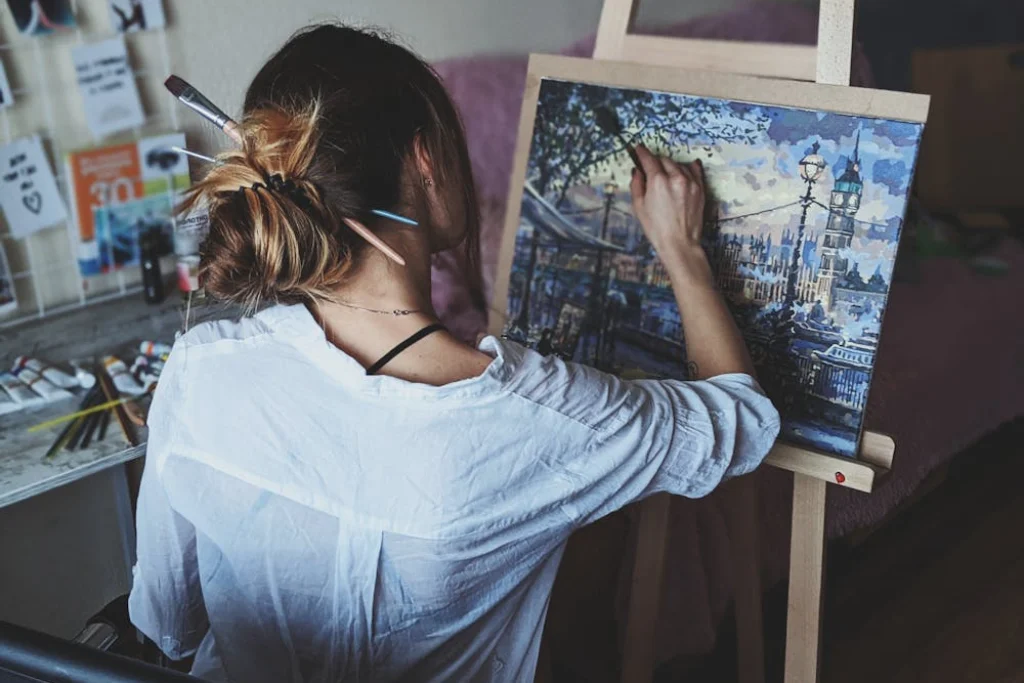Art is a universal language, a means of expressing emotions, telling tales, and capturing the spirit of the times. It is more than just paint on canvas or pencil on paper. From ancient cave paintings to contemporary digital works of art, the art world is wide, colorful, and ever-changing.Discovering the world of art is like opening a window to the human soul, regardless of whether you are an aspiring artist, a fan, or just inquisitive.
What Exactly Is Art?
Painting, sculpture, photography, architecture, film, digital media, and more are all kinds of art.Art is fundamentally a means of expression, despite differences in definition.It enables people to express their thoughts, investigate their identities, and represent the values and culture of their community.
From a child’s crayon doodle to a masterpiece by Monet, art challenges us to think more deeply, feel more deeply, and see more closely.
The Development Of Art: A Brief Historical Tour
1. Art From Prehistoric To Classical
Humans have been producing for more than 40,000 years, as evidenced by the cave paintings at Altamira and Lascaux.
Greek and Egyptian art raised the bar for sculpture, symbolism, and symmetry.
2. Baroque And Renaissance
Realism, perspective, and emotion were redefined by artists such as Michelangelo, Caravaggio, and Leonardo da Vinci.
Religion, science, and humanism all became intricately entwined with art.
3. Contemporary Movements
Impressionism (Monet, Degas) defied convention by using vibrant colors and free brushstrokes.
Abstract art, surrealism, and cubism all pushed the envelope and reinterpreted what art might be.
4. The Modern And Digital Era
These days, art encompasses NFTs, AI-generated works, performance art, and installations.
Art is now more widely available and accessible than ever thanks to websites like Instagram and online galleries.
The Significance Of Art
Art is essential to the growth of the individual as well as the community. This is why it is so crucial:
Identity & Expression: Art offers a secure environment for expressing feelings and ideas.
Cultural Preservation: Traditions, history, and heritage are all preserved by art.
Social Commentary: Art has the power to question conventions, increase consciousness, and spur change.
Mental Wellness: Making art or appreciating it can be therapeutic, lowering stress levels and improving mental health.
How To Investigate The Art World
There is always something new to learn, regardless of how experienced you are with art:
1. Go To Museums And Galleries
From modern exhibitions to historical antiques, local and international organizations have something to offer.
2. Consider Making Your Own
You do not have to be an expert. Take out your iPad, pencil, or brush and get started!
3. Attend A Workshop Or Class
Community centers and online resources include classes in photography, painting, drawing, and other subjects.
4. Keep Up With Artists Online
Social media helps you stay up to date with worldwide trends and provides insight into the creative processes of artists.
5. Go To Art Events
You may see creativity in action at art fairs, open studios, and exhibits.
Concluding Remarks
Art may be found everywhere and is accessible to anyone.Art enriches our life, whether it makes you think, stirs your mind, or just makes your wall look nicer.When you explore the world of art, you are seeing more than simply beautiful images; you are seeing history, passion, creativity, and culture come to life right before your eyes.
So feel free to go to a gallery, grab a paintbrush, or just take in a mural in your community.There is something for everyone in the waiting world of art.




